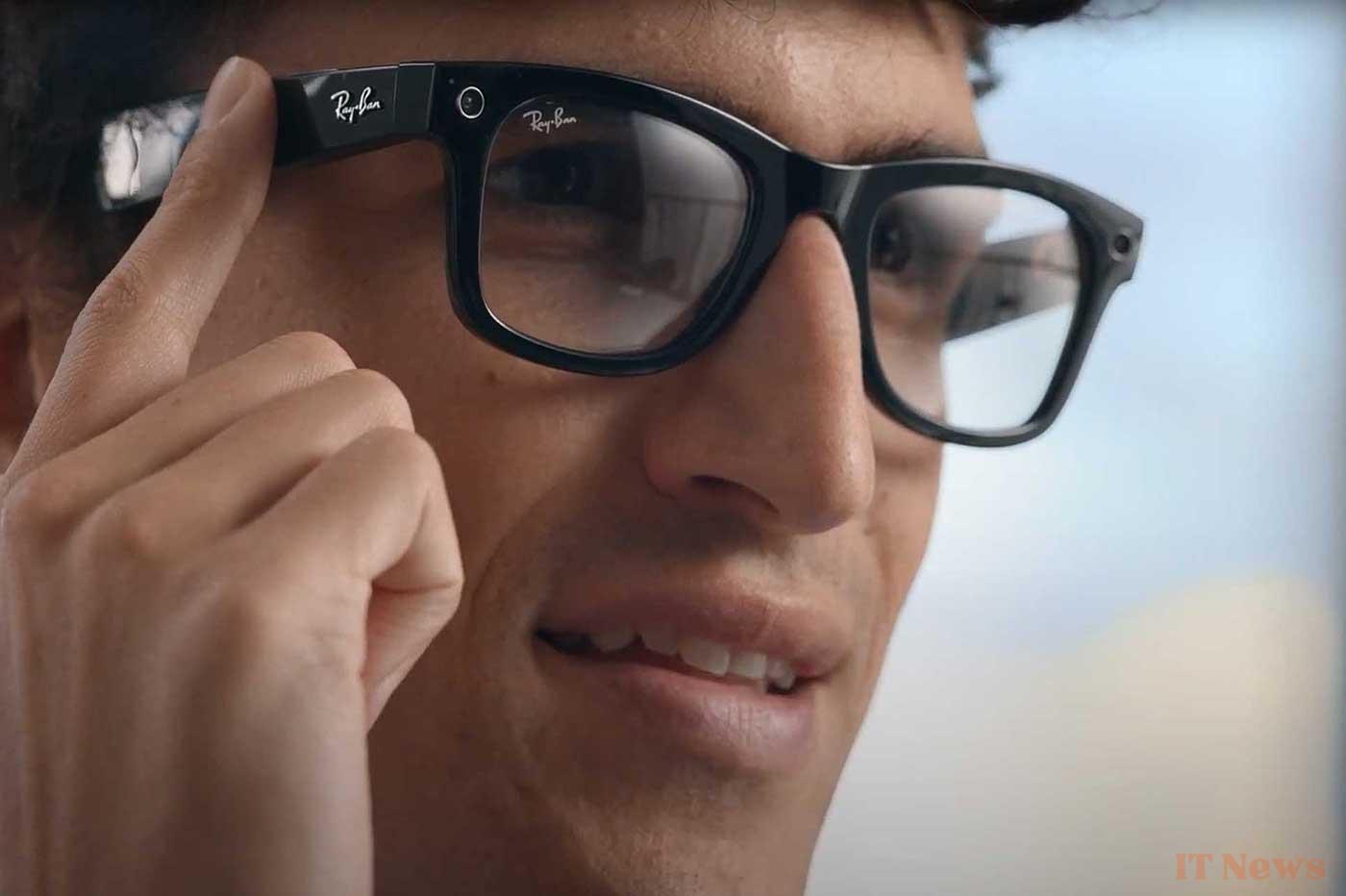Meta is currently preparing a new, more premium version of its Ray-Ban Meta smart glasses with a built-in screen. Here's what we know about this new iteration, which will undoubtedly aim to popularize a concept that the general public doesn't seem to have really embraced so far.
According to Bloomberg, which revealed The product's existence on April 1st means the glasses will be capable of running a wide range of applications. These will be controlled through a mixed interface, consisting of a capacitive touch surface on the frame and a connected bracelet coupled with a gesture recognition system. The virtual screen, for its part, will apparently be displayed through the right lens, in the lower right corner of the field of vision.
The report also mentions a significantly improved camera compared to that of the current model. An important point, firstly because the usefulness of these mixed reality systems depends directly on the quality of the video stream, but also because Meta still seems determined to position these glasses as a new type of AI assistant capable of analyzing its environment in real time.
Still according to Bloomberg, these glasses, currently codenamed Hypernova, will be offered for sale between $1,000 and $1,400 (920 to 1,390 euros). A decidedly high price. for a product that, until now, has had a little trouble finding its audience.
The general public is curious, but not yet convinced
As a reminder, the release of Ray-Ban Stories, the company's first connected glasses model, dates back to 2021. At the time, Meta saw it as the first step in a major generational shift. She hoped to convince a wide audience to adopt Mark Zuckerberg's new craze, who never stopped talking about augmented reality and his famous "Metaverse" — a concept that has since more or less been forgotten.
Fortunately for the company, these smart glasses haven't quite followed the same trajectory. Last February, Meta revealed that the latest Ray-Ban Meta model had met with some success, with around two million units sold by 2024 despite its ultimately rather limited capabilities. These are ultimately fairly standard gadgets, with the sole purpose of including a camera, speakers, and a few additional features (translation: Shazam...). No revolutionary augmented reality features, however.
Ray-Ban Meta Handling, Up to the Designers
With these Hypernovas, Meta seems about to take a real step forward in this area. But will that be enough to convince the public? Nothing could be less certain, because the features were not the only element that slowed down the adoption of these connected glasses.
We can notably cite the potential confidentiality problems posed by these objects. Meta has regularly been singled out for its questionable management of personal data, and this reputation risks being even more prohibitive today, in a context where the exploitation of data by AI models is becoming an increasingly sensitive issue. every day that passes.
It will therefore be interesting to see if Hypernova will generate more enthusiasm than its predecessors, or if it will remain confined to the status of a niche product without any real concrete interest for the general public. See you at the end of the year, the expected release date,



0 Comments